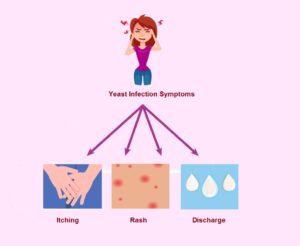What is a medical abortion?
A medical abortion is a low-risk, non-invasive way to terminate (end) a pregnancy. It is around 95 % – 99% effective .
It is a procedure in which pills are administered to stop the growth of the fetus and to expel the fetus from the uterus.
It is generally a safe procedure.
The pills are available by prescription from an abortion clinic and may be taken at home in an early pregnancy.
Abortions are safest, and happen with less pain and bleeding, when carried out as early as possible in pregnancy. While medical abortions can also be a home procedure, a surgical abortion needs to be done in an abortion clinic or hospital.
Is abortion legal?
An abortion is also known as a Medical Termination of Pregnancy (MTP). In India, MTPs can be legally done under the Medical Termination of Pregnancy (Amendment) Act of 2021 under certain provisions. These are:
- A pregnancy may be terminated up to 20 weeks in the case of failure of contraceptive method or device.
- Opinion of one Registered Medical Practitioner (RMP) for termination of pregnancy up to 20 weeks of gestation.
- Opinion of two RMPs for termination of pregnancy of 20-24 weeks of gestation.
- Opinion of the State-level medical board is essential for a pregnancy to be terminated after 24 weeks in case of substantial fetal abnormalities.
- Upper gestation limit from 20 to 24 weeks for special categories of women, including survivors of rape, victims of incest and other vulnerable women (differently abled women, minors, among others).
- The name and other particulars of a woman whose pregnancy has been terminated shall not be revealed, except to a person authorized in any law that is currently in force.
When can a medical abortion be done?
A medical abortion can be done as soon as a pregnancy is diagnosed and up to 9 weeks of pregnancy. Some doctors prefer to do it only up to 7 weeks (49 days from the last menstrual period).
Who cannot get a medical abortion?
It is not advisable to get a medical abortion in some cases:
- Where the pregnancy is in more than 9 weeks of pregnancy.
- If there is a history of a bleeding disorder
- In women with anemia
- In cases of ectopic pregnancy
- In women who do not have access to emergency care if needed.
- Are allergic to the medicines used
- Have a intra-uterine device (IUD)
- Are on medicines like steroids
How is a medical abortion carried out?
Medical abortion involves taking two different type of pills:

The first one is a medicine called Mifepristone. Mifepristone works by blocking a hormone known as progesterone. Progesterone is necessary for the growth and development of the fetus. When it is blocked, the blood level falls – this causes the endometrium (inner uterine lining) to become thin and unable to support the fetus. It is given in a single 200 mg dose.
The second type of abortion pill is called Misoprostol. Misoprostol causes the uterus to contract and expel the fetus.
Misoprostol can be given in different doses. The most common dose is to take a 400 mcg dose after 48 hours of taking the Mifepristone. The tablets can be put under the tongue, between the cheek and gum, or inside the vagina. This is usually sufficient to stimulate uterine contractions and expel the pregnancy. But a second dose of 400 mcg may be given after 24 hours to ensure complete emptying of the uterus.
Other dosage regimens like 600 mcg or 800 mcg after 48 hours is also effective. Higher dosages are usually needed in a pregnancy which is of a longer duration.
What happens after taking the pills?
No signs or symptoms occur after taking the Mifepristone. Symptoms start after taking the Misoprostol tablets.
- Pain and bleeding due to uterine contractions usually starts about 4-5 hours after taking the Misoprostol. In some women they may start later but in most cases, they start within 24 hours.
- Pain continues for about 5-6 hours and then subsides. But bleeding continues for a longer time and like a period, decreases gradually over 4-5 days.
- There may be heavy bleeding with passage of clots.
- The cramps may be quite severe for about 4-5 hours.
- Some women have vomiting, fever and chills which last for about 24 hours.
- Some women may also have diarrhea.
- An ultrasound is necessary after 10 days to check that the uterus is completely empty.
- Medical abortions are most successful when done within 6 weeks of pregnancy. After 6 weeks, there is a risk of an incomplete abortion. If incomplete abortion does occur, a surgical D&C may be necessary to remove the pregnancy tissue in the uterus.
- After 9 weeks, a surgical abortion is better since the risks of an incomplete abortion are high.
How should I prepare for a medical abortion?
The following steps are necessary before getting a medical abortion:
- A complete examination to assess your health.
- An ultrasound to check the duration of the pregnancy as well as to rule out an ectopic pregnancy
- Blood tests to check foe anemia and blood group.
- Ensure that you have supportive care on the day of taking the medicines.
What are the advantages of a medical abortion?
A medical abortion has many advantages over a surgical abortion:
- It can be done as soon as a pregnancy is diagnosed.
- No surgery or anesthesia is involves
- Less risk of infection
- Can be done safely at home
- It is more natural.
What are the risks of medical abortion?
A medical abortion is usually quite safe with minimal risks. But some risks which can occur are:
- Heavy bleeding
- Severe cramps
- Incomplete abortion
- Infection
Side Effects of Medical Abortion
- Nausea
- Vomiting
- Diarrhea
- Painful Stomach Cramps
- Heavy Bleeding
- Feeling very sick or tired.
How soon will I recover from a medical abortion?
Most women recover with the next 1-2 days and can go back to work in 48 hours. Some women may need to rest for about 3-4 days.
How long will I bleed after a medical abortion?
The amount of bleeding depends on the duration of pregnancy. Bleeding is heavy the first 1-2 days and then continues for about 6-7 days, decreasing every day like a normal period.
How soon can I have sex?
It is best to avoid having sex for at least 2 weeks to prevent an infection.
When will I get my next menstrual period?
The next menstrual period will occur 4-6 weeks after the abortion.
How soon can I get pregnant again?
Ovulation occurs about 2-4 weeks after a medical abortion. And you can get pregnant as soon as ovulation occurs.
When should I contact my doctor?
Please contact your doctor if:
- Bleeding is very heavy and you are soaking a pad in 2 hours or less
- Fever that lasts for more than 24 hours or is more than 100 degrees C.
- Foul smelling discharge
- Symptoms of pregnancy continues for more than 2 weeks after the abortion.
- You do not get your periods after 6 weeks.
What is the cost of a medical abortion?
In India, the abortion kit ( containing 1 pill of Mifepristone and 4 pills of Misoprostol tablets of 200 mcg each) costs around Rs 500. There are different brand names available in the market – Mifty, Mifegest, a-care etc.
The follow up ultrasound will cost about Rs 1200 – Rs 1500.
Medication abortion is one way to end a pregnancy. It is safer than surgical abortion and studies show that it is extremely safe and effective.
Read More Questions and Answers on Pregnancy and Gynecology

How to stop my Period…
How can I stop or delay my period? Can I use birth control pills?

I think I have a yeast infection
I think I have a yeast infection. I had vaginal itching earlier and it is itching again now. What should i do?

I think I have Bacterial Vaginosis
I think I have bacterial vaginosis. I have a vaginal discharge with a fishy odor since the last few days. When should I see a doctor?

I am in early pregnancy and have dark brown discharge
Early pregnancy bleeding. What is wrong with me? What should I do?

I am in Menopause and Bleeding Heavily
I am 52 years old and in menopause. I have been bleeding heavily for 8 days. What should I do now?

Missed birth control pill. Will I get pregnant?
I missed a birth control pill on the second week. Then I took the next one on time. I also took the placebo pills I day early. Will I get pregnant?





